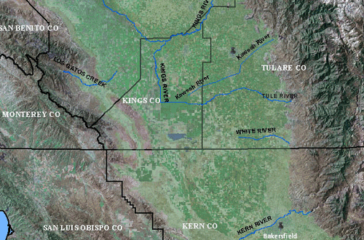Postcard from California: A phantom lake rises again
By Bill Walker
At the start of the California Gold Rush in 1849, Tulare Lake was the largest body of fresh water west of the Mississippi River: In wet years, the shallow inland sea that is fed by four rivers covered 800 square miles or more of the lower San Joaquin Valley.
 EWG
EWG